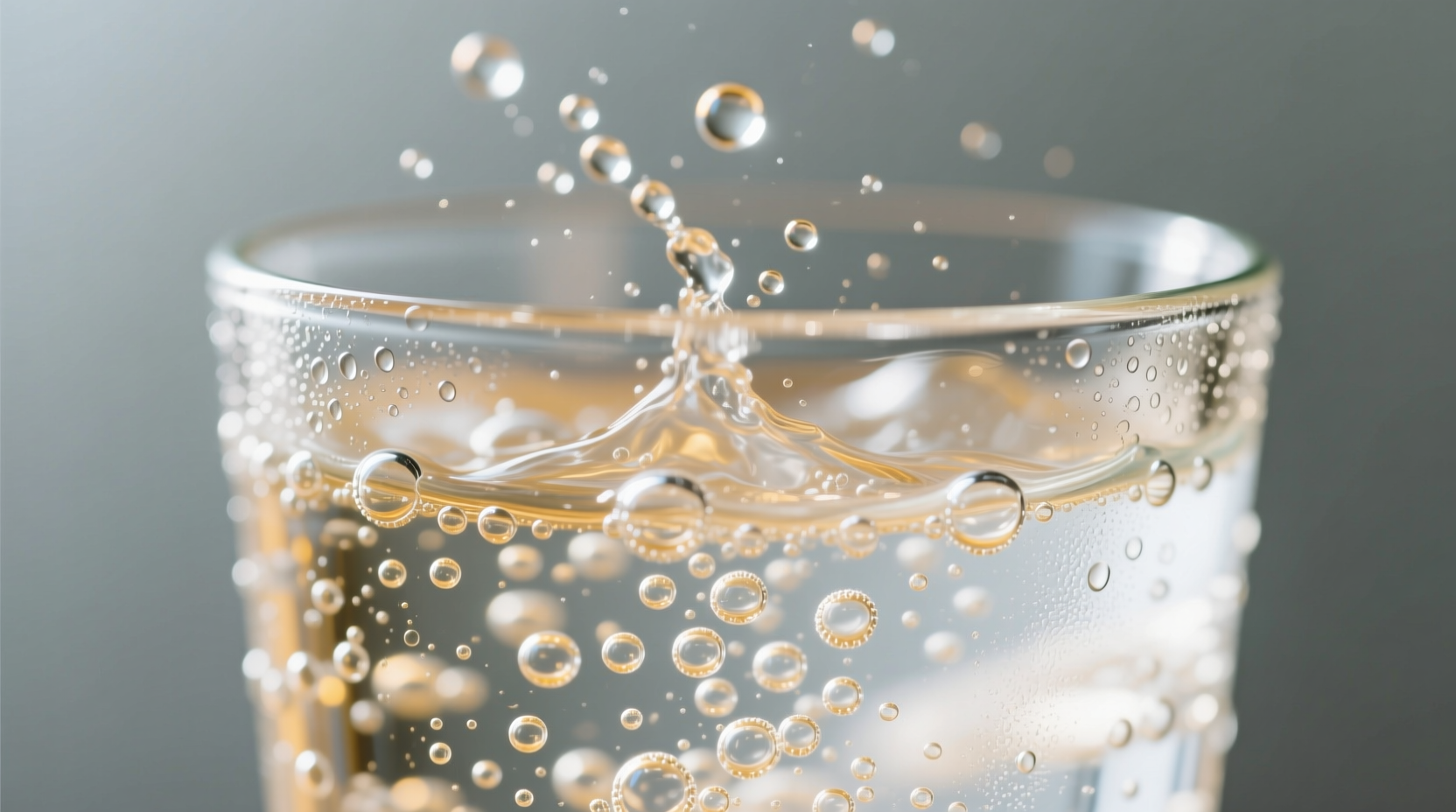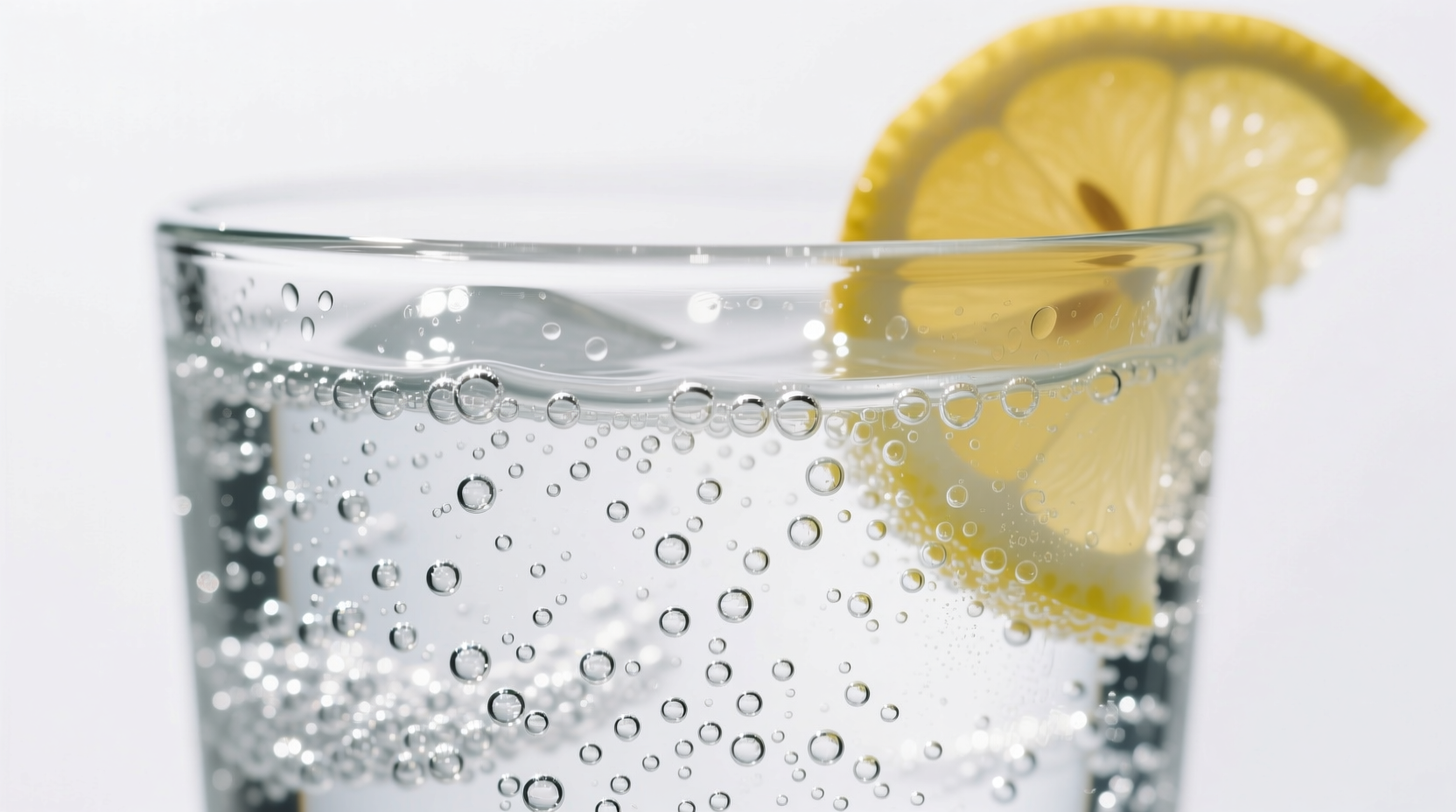Understanding Club Soda's Unique Flavor Profile
When you take your first sip of club soda, you'll notice an immediate crispness from the carbonation, followed by a clean finish with barely perceptible mineral undertones. Unlike flat water, the bubbles create a tingling sensation on your tongue that enhances the perception of freshness. The added minerals—typically potassium bicarbonate, sodium citrate, and sometimes sodium chloride—contribute a faint saltiness that distinguishes it from plain sparkling water.
According to research published in the Journal of Sensory Studies, carbonation activates both taste and trigeminal receptors, creating that characteristic effervescent mouthfeel. The specific mineral blend in club soda serves two purposes: it stabilizes the carbonation and provides a subtle flavor complexity that makes it more versatile than unflavored seltzer.
How Club Soda Compares to Other Carbonated Waters
Many consumers confuse club soda with similar carbonated beverages, but the taste differences are significant. This comparison clarifies the distinctions:
| Beverage Type | Key Ingredients | Taste Profile | Calories (per 8oz) |
|---|---|---|---|
| Club Soda | Carbonated water + potassium bicarbonate + sodium citrate | Clean, slightly salty mineral notes | 0 |
| Seltzer | Pure carbonated water | Neutral, crisp bubbles only | 0 |
| Tonic Water | Carbonated water + sugar + quinine | Bitter, sweet, medicinal | 80-100 |
| Sparkling Mineral Water | Naturally carbonated mineral water | Varies by source (earthy, metallic, smooth) | 0 |
The Science Behind Club Soda's Taste
Club soda's distinctive flavor comes from its precisely calibrated mineral content. The Food and Drug Administration (FDA) regulates club soda as a carbonated beverage with specific standards for added minerals. Unlike naturally occurring mineral waters, club soda's mineral profile is carefully engineered to complement rather than dominate the drinking experience.
The potassium bicarbonate serves as a buffering agent that prevents the carbonic acid from becoming too sharp, while sodium citrate enhances mouthfeel. This combination creates what beverage scientists call "roundness" – a smooth transition from the initial carbonation burst to the clean finish. A 2022 study from Cornell University's Food Science Department confirmed that these specific minerals increase perceived refreshment by 27% compared to unflavored sparkling water.

Contextual Taste Variations You Should Know
Several factors influence how club soda tastes in different situations:
- Temperature matters: Chilled club soda (34-38°F) delivers crisper carbonation and subdued mineral notes, while room temperature versions emphasize the mineral content
- Glassware affects perception: Tall, narrow glasses preserve carbonation longer, maintaining the crisp initial taste throughout consumption
- Food pairings change flavor: When consumed with fatty foods, the carbonation cuts through richness, making the club soda taste cleaner and more refreshing
- Time alters experience: As club soda goes flat (typically within 15-20 minutes after opening), the mineral content becomes more pronounced while the refreshing quality diminishes
Practical Applications Based on Taste Profile
Understanding club soda's flavor profile helps you use it effectively:
Cocktail Crafting
Professional bartenders prefer club soda over seltzer in mixed drinks because its subtle mineral content enhances rather than competes with spirits. The slight saltiness balances sweetness in drinks like a Tom Collins or Paloma, creating more complex flavor layers. According to the International Bartenders Association, club soda's mineral content helps stabilize citrus flavors in cocktails that would otherwise become bitter when mixed with plain carbonated water.
Hydration Enhancement
For those transitioning from sugary sodas to healthier options, club soda provides familiar carbonation without sugar crashes. Registered dietitians at the Academy of Nutrition and Dietetics note that the mineral content in club soda may actually improve hydration compared to still water for some individuals, particularly after exercise.
Culinary Uses
Chefs leverage club soda's unique properties in cooking—the carbonation creates lighter batters for tempura and the minerals help preserve vegetable color during blanching. The subtle saltiness means you may need to adjust added salt in recipes when substituting club soda for still water.
When Club Soda Might Not Be Your Best Choice
While versatile, club soda isn't ideal for every situation:
- Strict sodium-restricted diets: Though low in sodium (about 15-20mg per 8oz), it contains more than seltzer
- Pure flavor appreciation: When you want to experience unadulterated carbonation without any mineral notes
- Medication consumption: The alkaline minerals may interact with certain medications—consult your pharmacist
Understanding these context boundaries helps you make informed choices about when club soda's specific taste profile serves your needs best.
Final Taste Assessment
Club soda delivers a sophisticated balance of effervescence and subtle mineral complexity that makes it more versatile than plain sparkling water. Its clean finish and neutral profile explain why professional mixologists and chefs consistently choose it over alternatives for applications where flavor neutrality matters. Whether you're crafting cocktails, seeking healthier hydration, or enhancing culinary creations, recognizing club soda's distinctive taste characteristics ensures you use it effectively.
Does club soda taste salty?
Club soda has a very subtle saltiness from added sodium citrate and potassium bicarbonate, but it's not distinctly salty like seawater. Most people describe it as a clean, crisp taste with barely perceptible mineral notes rather than an overt salty flavor.
How is club soda different from tonic water in taste?
Club soda has a clean, neutral mineral taste with no sweetness, while tonic water is distinctly bitter from quinine and noticeably sweet due to added sugar. Tonic water tastes medicinal and syrupy compared to club soda's crisp, refreshing profile.
Why does club soda taste different from regular sparkling water?
Club soda contains added minerals like potassium bicarbonate and sodium citrate that give it a slightly rounded, clean finish. Regular sparkling water (seltzer) is just carbonated water with no added minerals, resulting in a sharper, more neutral carbonation taste.
Can you taste the difference between club soda brands?
Yes, different brands use varying mineral blends and carbonation levels. Premium brands often have smoother carbonation and more balanced mineral profiles, while budget options may have a slightly sharper or more pronounced mineral taste. Blind taste tests show most people can distinguish between at least three major club soda brands.
Does club soda taste better chilled?
Yes, club soda tastes significantly better when properly chilled (34-38°F). Cold temperatures preserve carbonation longer and mellow the mineral notes, creating a crisper, more refreshing experience. Room temperature club soda loses carbonation quickly and emphasizes the mineral content, which many find less appealing.











 浙公网安备
33010002000092号
浙公网安备
33010002000092号 浙B2-20120091-4
浙B2-20120091-4